From My London Diary for 30th January 2011, with minor amendments. You can see many more pictures with the original post.
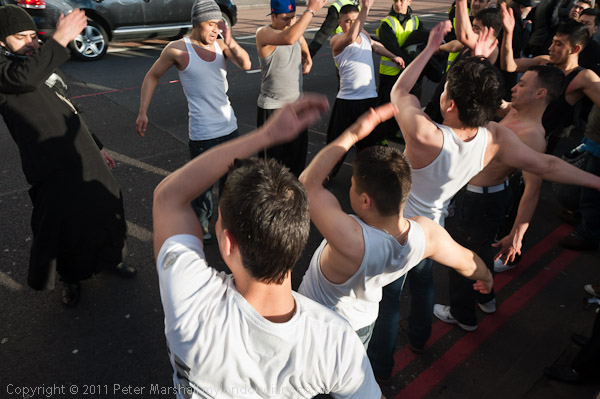
Several thousand Shia Muslims came to Marble Arch on 30th January 2011 for the 30th annual Arbaeen (Chelum) procession in London, commemorating the sacrifice made by the grandson of Mohammed, Imam Husain, killed with his family and companions at Kerbala in 680AD. Arbaeen takes place 40 days after Ashura, the day commemorating the martyrdom and marks the end of the traditional 40 days of mourning. After prayers and recitations they paraded along Park Lane in a ceremony of mourning.
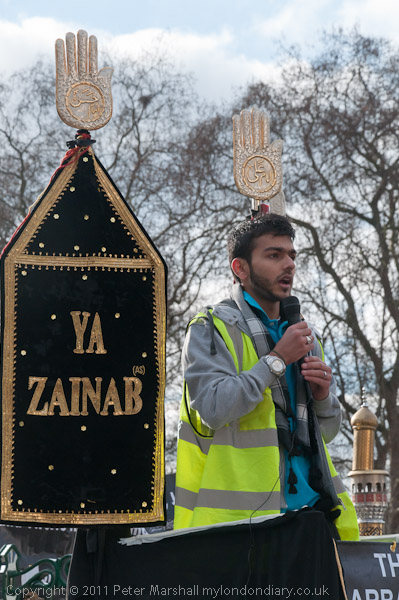
Imam Husain is seen by Shia Muslims as making a great stand against the oppression of a tyrant and representing the forces of good against evil. Husain and his small group of supporters were hugely outnumbered but chose to fight to the death for their beliefs rather than to compromise. Their stand is a symbol of freedom and dignity, and an aspiration to people and nations to strive for freedom, justice and equality.
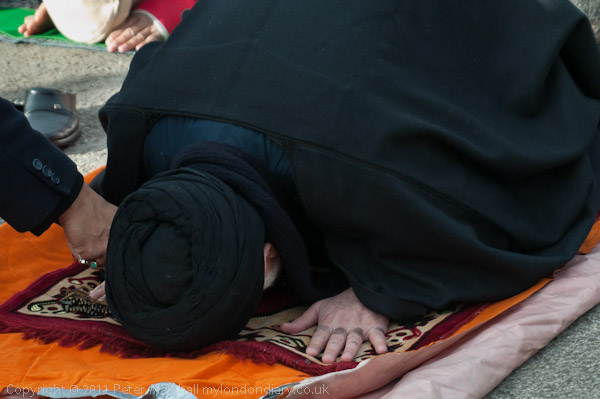
Arbaeen is also said to commemorate the return of the wives and families of those killed – who were marched away as captives to Damascus after the massacre – to Kerbala to mourn the dead after their release around a year later.
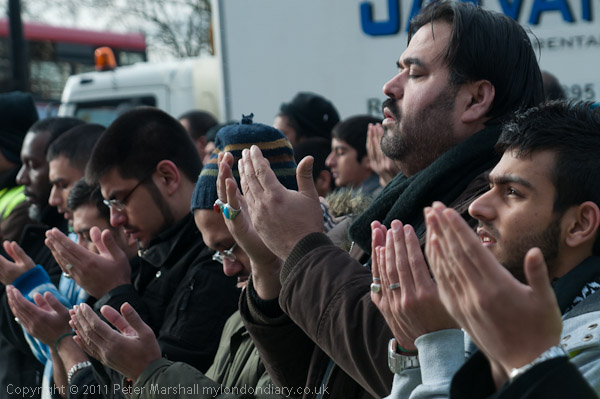
Millions now attend the annual Arbaeen event in Kerbala (though it was banned while Saddam Hussein was in power) and the London event attracts Muslims from all over the UK, although numbers this year seemed rather fewer than in some previous years.
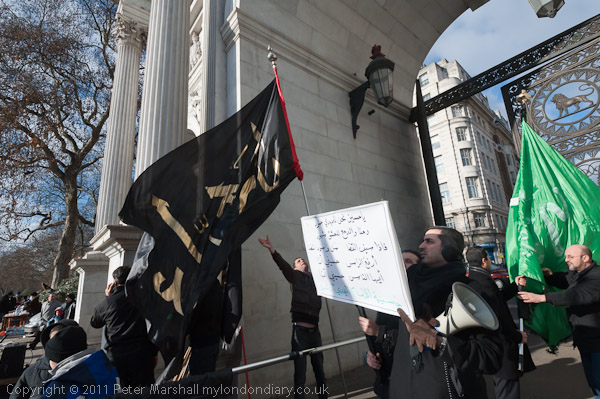
The Hussaini Islamic Trust UK first organised this annual procession since 1982, making it the oldest Arbaeen/Chelum Procession of Imam Husain in the west. It was the first annual Muslim procession in Central London and is still one of the larger annual Muslim processions in the UK. It is held on the Sunday closest to Arbaeen.
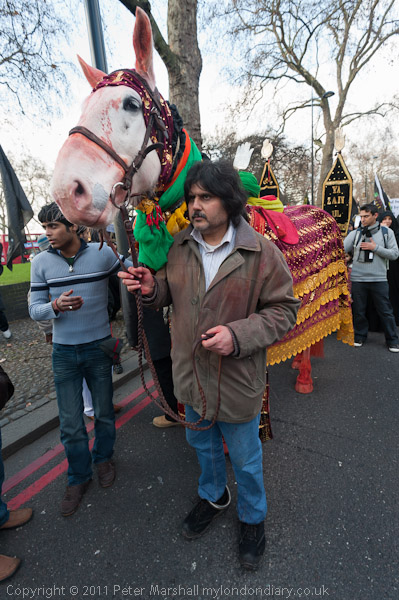
The procession includes several large replicas of the shrines of Karbala; known as Shabbih, these gold and silver models are over 10 feet high and the largest in Europe. There was also a decorated and blood-stained white horse or Zuljana representing the horse of Imam Husain, a cradle remembering his 6 month old child Hazrat Ali Asghar who was also murdered and a coffin.
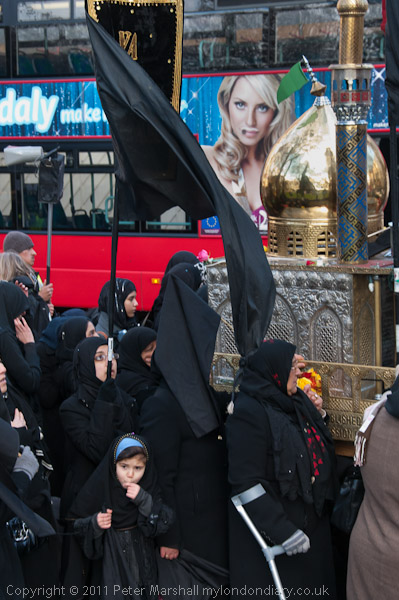
The day started at Marble Arch with prayers and recitation which were followed by speeches in English, Arabic and Urdu before the procession set off. I missed some of this as I was busy covering another event, but returned shortly after the procession set off down Park Lane.
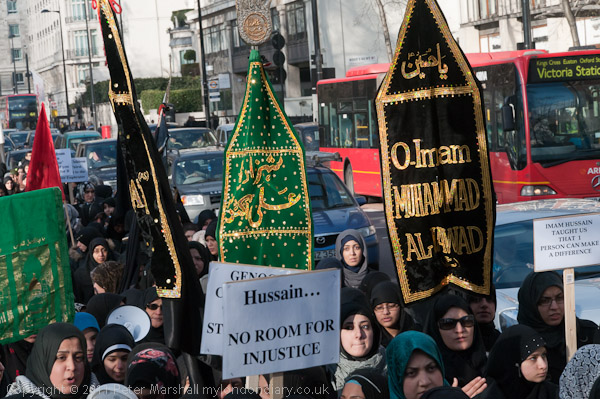
Groups among the men chanted and all those marching beat their chests as a token of mourning, most in a symbolic rather than very physical manner, but as the procession made its way down the road some were soon stripped to the waist and beating themselves vigorously, producing red marks and some drawing blood.
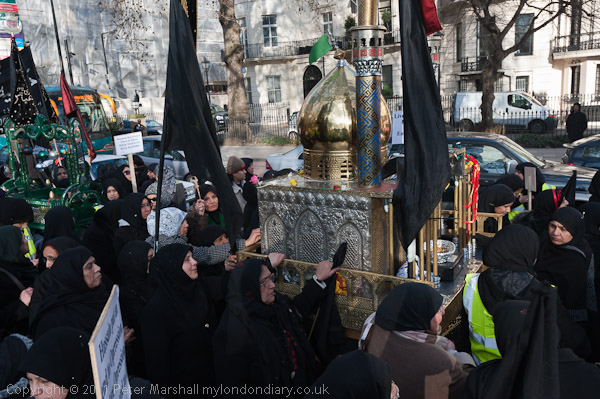
The women marched in a tightly packed separate group at the rear of the march, held back by a number of women stewards and pushing the cradle and one of the Shabbih. Like the men they chanted and made gestures of mourning. Although they were almost all dressed in black, many of them were carrying standards and flags, and some had some brightly coloured embroidery and headscarves.
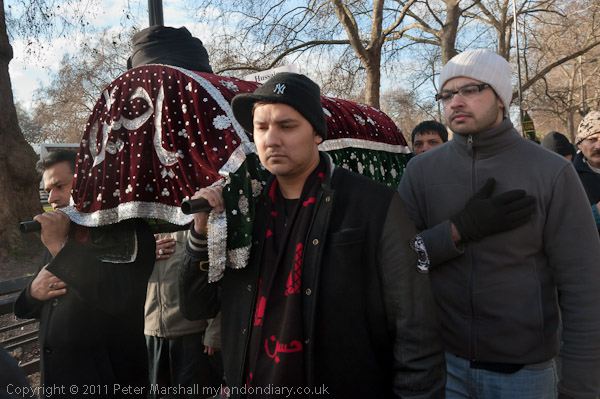
After the march there are light refreshments provided, but I left before that, catching a bus along Park Lane. The procession only occupies one of the three lanes of each of the dual carriageways and traffic keeps flowing throughout, although with some slight delays.
More pictures from this event in 2011at Shia Muslims 30th Arbaeen Procession. I photographed this procession in other years from 2007 to 2012 and you can find pictures from these by entering Arbaeen in the search box on My London Diary.
As I mention in the account above, I left the march to photograph another protest, in Oxford St, a short walk away from Marble Arch. Around 50 UK Uncut activists dressed as doctors and nurses a staged a peaceful protest in Boots in Oxford St against their avoidance of UK tax, closing the store. You can read about it in UK Uncut Protest Boots Tax Scam.








